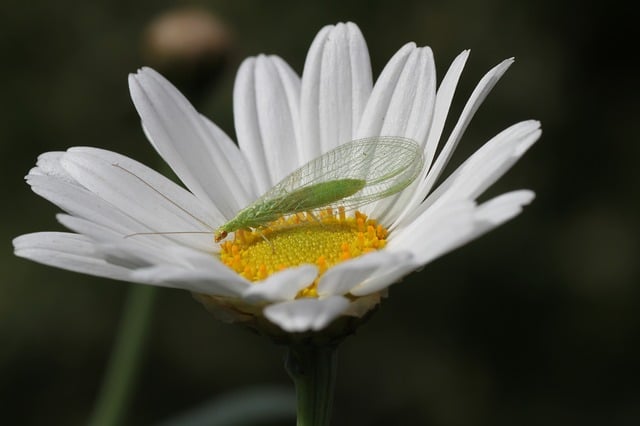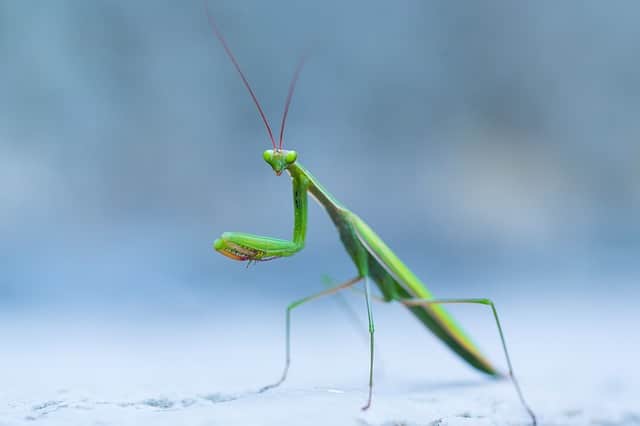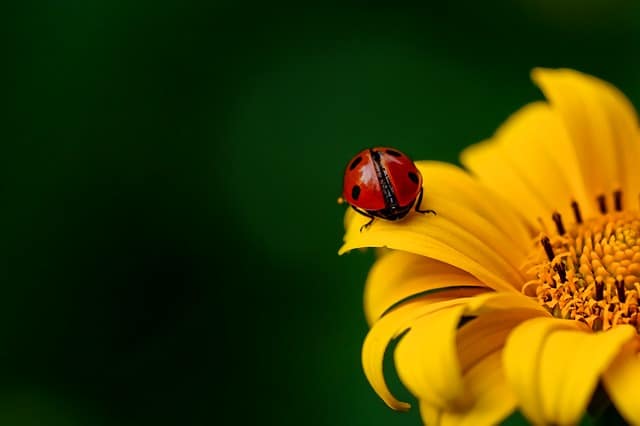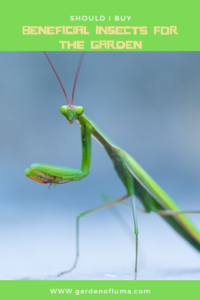Should I Buy Beneficial Insects for the Garden?

Having a pest outbreak in the garden can put a gardener in panic mode. One common thought is to grab the chemicals and go for a quick kill. Not only are chemicals death for the pests, they can wreak havoc on the good bugs, not to mention that it’s sprayed on or near things that we intend to eat. Speaking of useful insects, have you seen any around lately? If not, purchasing beneficial insects for your garden could be the best solution for your pest problem.
Should I buy beneficial insects for the garden? Purchasing beneficial insects can help eliminate harmful insects in the garden, but some factors should be considered before buying. For instance, introducing non-native insects or wild insects may cause potential disease and they don’t always stay where you want them too. With that being said, the pros can outweigh the cons when the alternative is using pesticides.
What do beneficial insects do?
When we talk about beneficial insects, we’re talking about bugs that prey on other bugs, specifically feeding on bugs that are considered pests to plants. Some beneficial insects also help with pollination.
Generally pests are considered those types of bugs that are harmful to agriculture. These types of bugs feed on edible plants, causing the plants vigor to diminish, and sometimes kill the plant. Beneficial insects can help edible plants excel by fending off some of these pests and reducing the quantity of these in gardens.
What insects are good for the garden?

We often think of bugs as a nuisance, but there are many that actually help our gardens flourish. Good bugs help keep our ecosystem in check by preying on those bugs that are harmful to our gardens. Here are several beneficial bugs and what they feed on:
Ladybugs
The queen of the beneficial insect world. They love aphids and it’s their meal of choice. They’ll also eat white flies, scale insects, and other soft bodied pests.
Lacewings
The larvae stage of this insect does most of the feeding on soft bodied pests like aphids, thrips, white flies, and mealybugs. Once the larvae matures to an adult, it begins focusing more on pollen and nectar consumption.
Praying Mantis
This insect can be a menace for pests, but also will attack anything else in its path, including good bugs. In infant stages they feed on aphids and other soft bodied pests. As the get older they start feeding on larger insects. The benefits typically outweigh the negatives.
Pirate Bugs
Although they can bite humans, similar to a mosquito bite, they are beneficial insects. It wouldn’t be my first choice to add via purchase. Their main diet consists of thrips, aphids, mites, and other pests.
Ground Beetles
These beetles eat several pests, including the dreaded cutworm.
Syrphid Flies
These are also commonly known as hover flies and have a similar appearance to a small bee. The larvae feed on caterpillars, aphids, scale insects, and soft bodied pests.
Assassin Bugs
Similar to the Praying Mantis, these bugs will go after any insect that comes their way. They’re called assassins for good reason, but again the pros outweigh the cons with this bug. They’ll eat leaf hoppers, aphids, boll weevils, and other pests.
Increasing the Beneficial Insect Population in your Backyard
If you’re not seeing many of the listed beneficial insects in your backyard gardens, it’s not ideal, but there are different measures to take for bringing these bugs into your yard. Purchasing beneficial insects online is one method. It’s as simple as going to Amazon or various sites and submitting your order.
Click here to see the latest prices on the highest rated seller on Amazon for ladybugs.
Click here to see the latest prices on the highest rated seller on Amazon for lace wing larvae.
Click here to see the latest prices on the highest rated seller on Amazon for Praying Mantis eggs.
It’s important to consider your daily temps when ordering insects online. It’s best to order when temps are moderate to ensure they survive. Also, order when you know you’re going to be home, so they’re not sitting in the mailbox or on your front porch for long periods of time.
Growing specific plants that attract beneficial insects can also help attract them. For example, it’s rare to find Hover flies for purchase, but they like a few different plants especially fragrant herbs like oregano, garlic, chives, buckwheat, and sweet alyssum.
Try dill, fennel, dandelion, or coriander for lacewings and ladybugs. Also keep in mind that if your using things to kill off all pests, then it provides less food for the beneficial bugs. So, your goals should be to create a healthy ecosystem that maintains balance.
RELATED POST: How to Attract Pollinators to the Garden (Even in the Desert)
How do I use insects after purchase?

If you decide to purchase beneficial insects, then what? Inspect the bugs to ensure they survived the transport to your home. Avoid releasing them during the hotter parts of the day. It’s best to wait until the evening or early morning.
Release the bugs directly where the pests are most prevalent. It can help to mist a bit of water on the plants prior to releasing the bugs to provide them some moisture to drink. Follow the instructions provided by the supplier.
How do I ensure they stay where I want them?
Once the bugs are released they’re free to do what they want, which can mean they may leave your garden area. A few things that can help keep them where you want them is to purchase larger quantities. It’s more likely to be successful when you have more insects readily available when some leave the area.
Some bugs can be stored for a period of time so you may be able to slowly release a batch at a time over a few days. If your infestation is in a small area, it can help to build a small structure using screening to keep the bugs in the area while they feed on the pest population.
RELATED POST: Essentials for a Successful Butterfly Garden in Hot Climates

Final Thoughts
Put the harmful chemicals aside and utilize organic methods to eliminate pests. Purchasing beneficial insects online, when done right, can work to reduce infestations and destructive insects. If anything, consider creating a healthy ecosystem for beneficial insects to thrive and plant some of the things that attract them.
Please comment below on anything that you’ve enjoyed from this post or your experiences purchasing beneficial insects.
